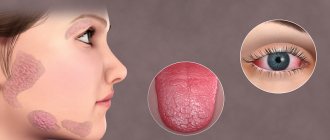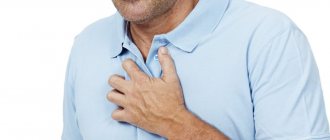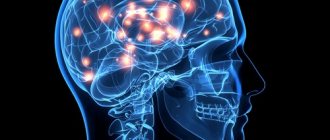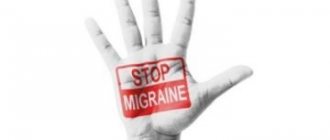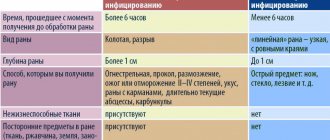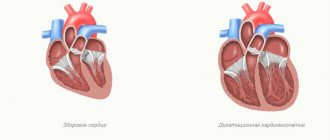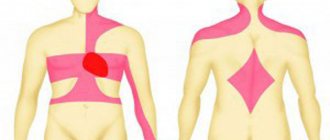Extrasystole: why you can’t trust information on the Internet regarding its symptoms
Often people who feel the symptoms of extrasystole make a serious mistake: instead of immediately contacting a specialist (cardiologist, psychologist, psychotherapist), they start looking for information on the Internet, trying to find out what extrasystole , what is happening to them and how dangerous it is. They browse a huge number of medical sites and forums, receiving a barrage of completely unnecessary and often completely harmful information - and thereby only worsen their condition. So reading medical articles, communicating on forums and communities more often do harm than good. Why?
Firstly, the symptoms of extrasystole are discussed by unknown people, citing unreliable sources, many of which were either written by amateurs or are long outdated.
Secondly, websites and forums are often written by illiterate people who, although not on purpose, misinform readers.
Thirdly, people who really have heart problems come there: organic lesions, other forms of arrhythmia, etc. They communicate with people whose extrasystole is purely functional in nature, that is, it is just a psychological problem, and there are no pathological changes in the heart. As a result of such communication, a person with symptoms of extrasystole increases anxiety and fears of dying from heart disease, when in fact his heart is absolutely healthy.
Say no to forums and medical sites
Receiving a bunch of unnecessary and useless information, a person begins to limit himself physically, he develops a fear of extrasystole and develops cardiophobia. But if a person really wants to get rid of the fear of extrasystole , which is actually safe, he needs to avoid visiting any medical sites. Everyone. Even those where there are good cardiologists who confirm that extrasystole is, in principle, safe. It is enough to download a couple of articles where good cardiologists say that it is safe, and that’s all. And constantly visiting medical sites will lead to a person misinterpreting the information that is presented there, because he is not a cardiologist.
The same applies to forums dedicated to VSD. If you go to any of them and find a topic about extrasystole , you can read a lot of stories written by different people who are far from medicine.
Moreover, all these stories are filled with complaints and do not contain any valuable information. Sometimes people on such forums write sheer nonsense, and a person, instead of finding ways to solve his problem, begins to get confused and scared.
Symptoms
Extrasystoles during VSD are associated with a nervous disorder and manifest themselves:
- in an anxious state;
- irritability:
- increased excitability;
- panic attacks;
- shortness of breath and lack of air;
- general weakness and dizziness.
Extrasystole on the ECG
If, during VSD, patients have bouts of fever often followed by chills, then in combination with an abnormal heart rhythm, these phenomena are further aggravated, exhausting the body.
A common symptom that develops against the background of extrasystoles in dystonia is insomnia. It occurs against a background of anxiety, and together with nightly interruptions in heart rate, leads to panic attacks. In this case, sedatives are used to relieve this condition.
Arrhythmia with VSD is accompanied by both tachycardia (rapid heart rate) and bradycardia (slow heart rate). Extrasystole varies according to the area in which the source of excitation is located: ventricular, atrioventricular, atrial.
Extrasystoles are rare - up to 5 times/min; medium – up to 15 times/min; frequent – more than 15 times. In addition, they also differ in rhythm, when extrasystoles alternate with normal heart beats (bigemia), there are two heartbeats per extrasystole (trigemia) and it rarely happens that an extrasystole follows every third beat
This is important because when prescribing treatment, the area of localization and the shape of the systole are taken into account
Interruptions of the heart rhythm during VSD are functional in nature, therefore, not cardiac drugs, but sedatives and sedatives are used for treatment. But this is only true if the heart is completely healthy. If deviations in the cardiovascular system are observed, then complex therapy is carried out to support the heart and normalize the nervous system.
The problem is not in the extrasystoles themselves, but in the attitude towards them
of extrasystole during the day . Of course, this scared him. The main thing here is to understand that if a person does not have organic damage to the heart muscle, but has neurosis or some kind of exhaustion, then the problem is not in extrasystoles. Because there are people who have 30 thousand extrasystoles a day, but they don’t feel them and live normally. Moreover, almost all people have extrasystoles; they can be detected using a holder - an electrocardiogram device that reads information throughout the day. So the problem is not in the extrasystole , but in the attitude towards it.
Prevention of extrasystole
Since extrasystoles during VSD are caused by anxiety and banal fatigue, special attention should be paid to your daily routine.
Main rules of prevention:
- daily walks;
- full sleep for 7-8 hours;
- inclusion in the diet of foods high in beneficial microelements, magnesium and potassium;
- consumption of a sufficient amount of fluid, as well as medicinal plants, which will have a sedative, cardiotonic, and antiarrhythmic effect;
- giving up habits that negatively affect the body, reducing the consumption of strong tea and coffee;
- ensuring the patient’s emotional uplift, since without distraction by pleasant events the patient can “switch” to the depressive phase, which will be accompanied by an exacerbation of the pathology.
It is worth remembering that extrasystole occurs during VSD after prolonged use of harmful substances or certain medications. Therefore, it is worth assessing all the risks before taking this or that drug.
What cardiologists write about extrasystole
Cardiologist Eduard Romanovich Guglin:
“ Extrasystole is the most common and most harmless form of heart rhythm disturbance. Extrasystole is a manifestation of increased excitability of the heart muscle. Most often these are functional changes, but we do not find organic changes. And the heart, despite sometimes many years of extrasystole, remains healthy. This type of arrhythmia does not shorten life or increase the risk of other diseases or death. She's harmless enough. And the drugs that we use with greater or less success to suppress it, to reduce its frequency, are themselves quite toxic compounds.
As a result of large studies, it has been repeatedly established that suppressing extrasystole with antiarrhythmic drugs worsens, rather than improves, health, and therefore we usually try to persuade patients not to treat extrasystole. The whole problem is that in the normal state of the central nervous system they do not reach consciousness, do not rise above the subcortex and are not perceived by the brain. And with increased excitability, with various neuroses, these signals break through the barrier of the subcortical filter, and are perceived at the level of consciousness as something extra disturbing. With increased nervous sensitivity, they are perceived as a disorder, pathology, and frighten, alarm, and interfere with life.
Continuation
You just need to believe that extrasystole is not a harbinger of any organic heart disease, does not shorten life and, as a rule, does not require treatment. However, if it spoils life and reduces its quality, it can be treated with sedatives and sedatives. They increase the sensitivity threshold, transfer this reaction back to the subcortical level, reducing the degree of their perception by consciousness. They improve the tolerance of interruptions, making them less noticeable and less disturbing.
Let me give you an example: an athlete with ventricular extrasystoles who does not have organic heart disease has no risk of developing cardiovascular diseases. In one of the recent publications, ventricular extrasystoles of 2000 or more per day were determined in 70 athletes. They were suspended from physical activity for 3 months. In 16 of them, PVCs disappeared completely, in 34 PVCs decreased to 500 or less, in 20 there were no changes. All were allowed to compete, and over 8 years of observation, no one had any cardiovascular diseases.
Previously, it was assumed that high gradations of extrasystoles (class 3-5) were the most dangerous. However, further studies found that the clinical and prognostic significance of extrasystole (and parasystole) is almost entirely determined by the nature of the underlying disease, the degree of organic damage to the heart and the functional state of the myocardium. In persons without signs of myocardial damage, with normal contractile function of the left ventricle (ejection fraction), more than 50 extrasystoles , including unstable episodes of unstable ventricular tachycardia, even continuously reducing tachycardia, do not affect the prognosis and do not pose a threat to life.”
Should we be afraid of such a condition?
Is extrasystole dangerous during VSD? This question worries those who are faced with this condition. If there are no organic changes, extrasystole will not bring any danger to a person, but it is still the most common form of cardiac arrhythmia. Such problems usually arise both in patients suffering from frequent neuroses due to VSD, and during menstruation in women, as well as people whose activities are associated with constant increased stress.
This type of extrasystole does not require serious therapy, and its symptoms can go away on their own, and can also occur completely unnoticed by the patient. A specialist may prescribe the patient to use sedatives, but modern cardiologists believe that therapy involving the use of antiarrhythmic drugs can have the opposite effect, significantly worsening the patient’s general well-being.
The prognostic and therapeutic picture of the disturbed rhythm of the cardiac system and its sudden shocks is proportional to the characteristics of the concomitant disease. If it is absent or if there are no signs of damage to the contraction of ventricular and myocardial function within normal limits, extrasystole may not be considered as a pathology requiring emergency treatment.
And here is what antiarrhythmologist Alexander Ivanovich Korzun says about extrasystole:
“ extrasystole and does not require treatment. To their misfortune, someone feels these extrasystoles. In such cases, it is optimal to distract yourself with life: friends, family, children, work, hobbies, etc. If you can’t get distracted, then you need the help of a psychotherapist.”
According to these experienced doctors, it turns out that it does not matter what kind of extrasystoles a person has: ventricular, supraventricular, or preventricular. It is important that if he does not have organic heart disease, then the problem of extrasystole can be successfully solved with the help of a psychotherapist. There are also good experts who say: before there was no holder, and all people lived peacefully. Now the problem arises due to the fact that a person begins to feel extrasystoles, and the holder records them, thus creating a problem. Psychotherapy helps here, that is, increasing stress resistance.
True, the same Korzun also says that extrasystole is often a consequence of problems of the gastrointestinal tract. And gastrointestinal diseases primarily occur in people suffering from nervous disorders. Therefore, if a person really has problems with the gastrointestinal tract (gastritis, ulcers, reflux esophagitis), then he really needs to first treat the stomach in order to reduce the severity and manifestations of extrasystoles.
About drugs
Often, if a person goes to a cardiologist, he is prescribed antiarrhythmic drugs: Citalex, Propanorm, etc. Here, everyone takes responsibility for themselves whether they will take these medications or not, but reliable sources say that these drugs worsen a person’s condition. Therefore, you just need to keep in mind that with a healthy heart, extrasystole does not cause any problems. Problems begin when a person begins to obsess over them, when he begins to struggle with them, when he begins to read what he does not need to read and interpret it incorrectly.
With all the trust and respect for Eduard Guglin or Alexander Korzun, by constantly visiting their sites, a person only harms himself because he comes across some messages that he does not need. He begins to read about other types of arrhythmia, about other problems, without understanding the connection between them and taking individual phrases out of context.
Simply because an ordinary person who has problems and is looking for solutions to them is not a qualified cardiologist.
Therefore, if a person has such a symptom of vegetative-vascular dystonia as extrasystole , and he really wants to get rid of this problem, then, first of all, it is necessary to exclude communication on this topic, stop visiting medical sites and begin to move along the path of getting rid of neurosis, from anxiety disorder, from your internal tension, which leads to these problems. And then the extrasystole will gradually go away.
Of course, this article is intended for a rather narrow audience: some have extrasystole , others do not. If you don't have one, you're lucky: you don't even have to think that you might have one. But if it does appear, you are doubly lucky, because you will know that this is a completely harmless form of arrhythmia.
Reasons for the development of pathology
The occurrence of the disorder in question in patients can be facilitated by certain heart diseases - acquired, congenital or chronic. Extrasystoles formed during VSD are functional in nature, representing the result of a neurogenic factor.
Doctors identify the following reasons causing the development of the described condition:
- myocardial diseases;
- frequent consumption of drinks that have a high caffeine content;
- emotional or physical fatigue;
- diseases that are associated with the functioning of internal organs;
- smoking and drinking alcoholic beverages;
- nervous stress;
- menstrual cycle;
- damage to the central nervous system;
- infectious diseases that may be accompanied by fever;
- disruption of the nervous regulation of the functioning of the cardiac system.
In addition, possible progression of the disease cannot be ruled out, especially if the patient experiences degenerative changes, as well as inflammatory processes that are associated with insufficient blood supply to the heart.
Sometimes the disease can begin due to an intracellular ion imbalance resulting from a lack of the optimal amount of sodium, magnesium, potassium and calcium in the body. Extrasystole can develop during the formation of heart disease, myocardial dystrophy, myocarditis, as well as in ischemic diseases.
An additional source of development of extrasystole during VSD is called suppressed stress. Under the influence of accompanying symptoms, negative energy splashes out, which leads to destabilization of the functioning of individual organs or the entire organism. In neurotic conditions, extrasystoles, due to certain reasons, can “invade” the central nervous system, indicating the development in the patient:
- sudden attacks of anxiety;
- causeless manifestation of fear;
- unreasonable irritability.
Manifestations of irregular heartbeats usually do not pose any threat. The only exceptions will be people with existing cardiovascular diseases.
Acute circulatory failure can be caused by frequently recurring similar conditions. Thus, existing ventricular extrasystoles can pose a great danger, since there is a threat in which they often lead to ventricular fibrillation, which can cause sudden death.
Treatment methods
Mint infusion is good at calming the nervous system.
To get rid of dystonia combined with extrasystole, you need to lead a healthy lifestyle with sufficient physical activity
It is important to exclude overwork and psycho-emotional shocks. Proper nutrition is necessary without excess fatty, fried, spicy and sweet foods
You need to get rid of bad habits and follow a daily routine. You will also need to consult a neurologist who will prescribe neuroprotective drugs, vitamins and sedatives. The most commonly used infusions of medicinal herbs are motherwort, mint and lemon balm. Also used are infusions of valerian, chamomile, lavender and peony flowers.
In addition, therapeutic breathing exercises and other physical procedures are used that calm the nervous system and improve blood circulation. For persistent extrasystole, which significantly affects the general condition of the patient, “Novocainamide”, “Cordarone”, “Amiodarone” or “Lidocaine” are used. If there is no effect from conservative therapy, surgery is performed in the form of radiofrequency ablation or excision of the heterotropic focus of excitation of cardiac impulses.
Symptoms and diagnosis
Patients suffering from a disorder of the autonomic nervous system consult a doctor with the following symptoms:
- With ventricular extrasystoles, the blows to the chest from the inside are strong, they are interspersed with long pauses. The patient experiences either cold sweat or fever. From the fear of death, numbness and panic sets in, because a comfortable position cannot be found. My heart jumps out of my chest.
- With supraventricular failure, increased heartbeat occurs in the supine position. It either freezes or gives out more shocks.
- Common symptoms are dizziness, lack of air and difficulty breathing, numbness of the limbs, and general weakness.
All these signs of tachycardia and bradycardia do not pose a risk of sudden death, since VSD is not associated with organic damage to the heart. Extrasystoles in dystonics are called functional, but diagnostics should be carried out.
It is important to determine what triggered the attack in order to choose treatment tactics and avoid negative consequences:
- cardioneurosis, which can occur in panicky people;
- sleep disorders that aggravate the health status of the patient with VSD;
- tissue hypoxia due to decreased cardiac output and insufficient oxygen supply to the entire body.
An objective diagnostic method is an instrumental examination of the patient - an ECG, then an echocardiogram, MRI, etc. are prescribed. A cardiogram will show the presence and location of extrasystoles; with the help of an ECG, the beat frequency, tachycardia, atrial fibrillation, and other heart diseases can be determined. The correct rhythm is determined by the duration of the intervals, the nature and size of the teeth.
During the diagnosis, the patient lies on the couch, undressed to the waist, the specialist attaches electrodes to points (leads) clearly established by the protocol, which read information about the functioning of all parts of the heart.
After the ECG, 24-hour Holter monitoring may be prescribed. Indicators in such a study are obtained using a portable device attached to the patient’s body. The patient himself should keep an activity diary.
